Astrolabe Feature: Sea of Stars is the game Chrono Trigger fans have been waiting for
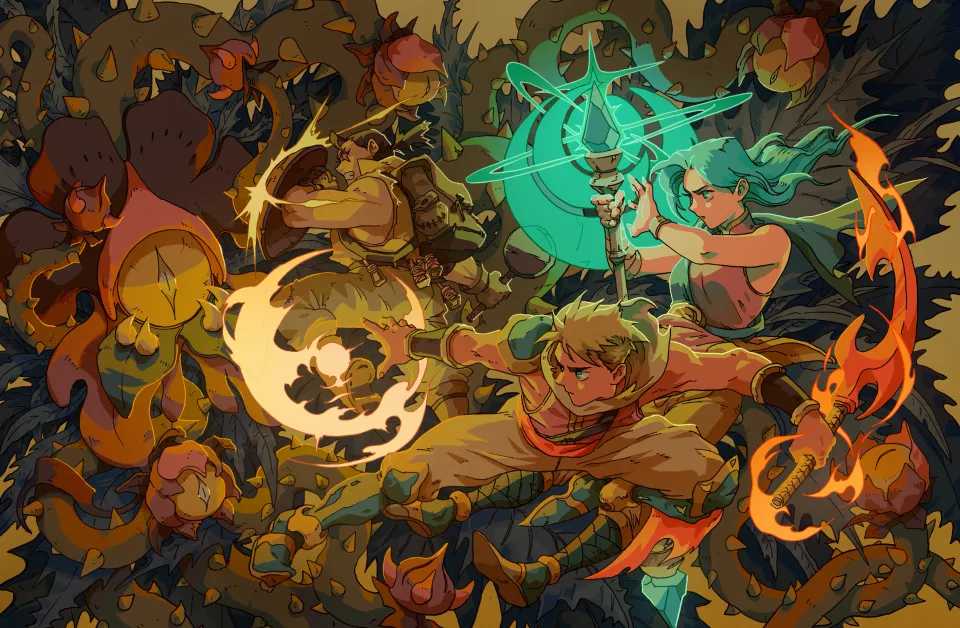
Retro games are hot right now, and we’ve seen many games, including Sabotage Studio’s own take on Ninja Gaiden, The Messenger, looking back to the golden age of gaming as they attempt to revitalize old classics with a modern coat of paint. Few games manage to pull off this tricky balance as well as their newest release, Sea of Stars.
In 2020, I spoke with Sabotage Studio’s creative director and Sea of Stars writer Thierry Boulanger about his inspirations and work on the game, and his passion for golden age Japanese RPGs from the Super Nintendo and PlayStation was clear. Citing the game’s western origins, Boulanger hesitated in calling Sea of Stars a “Japanese RPG,” instead telling me they’re billing it as a turn-based RPG — but the influence of classics like Chrono Trigger and Illusion of Gaia are obvious.
Playing as two solstice warriors named Valere and Zale, players take control of the powers of the sun and moon as they explore a lush, detailed fantasy world that feels at once like the classic Japanese RPGs on the Super Nintendo and also unlike anything the system could have even dreamed of pulling off at the time. It looks the way we remember Super NES games looking.
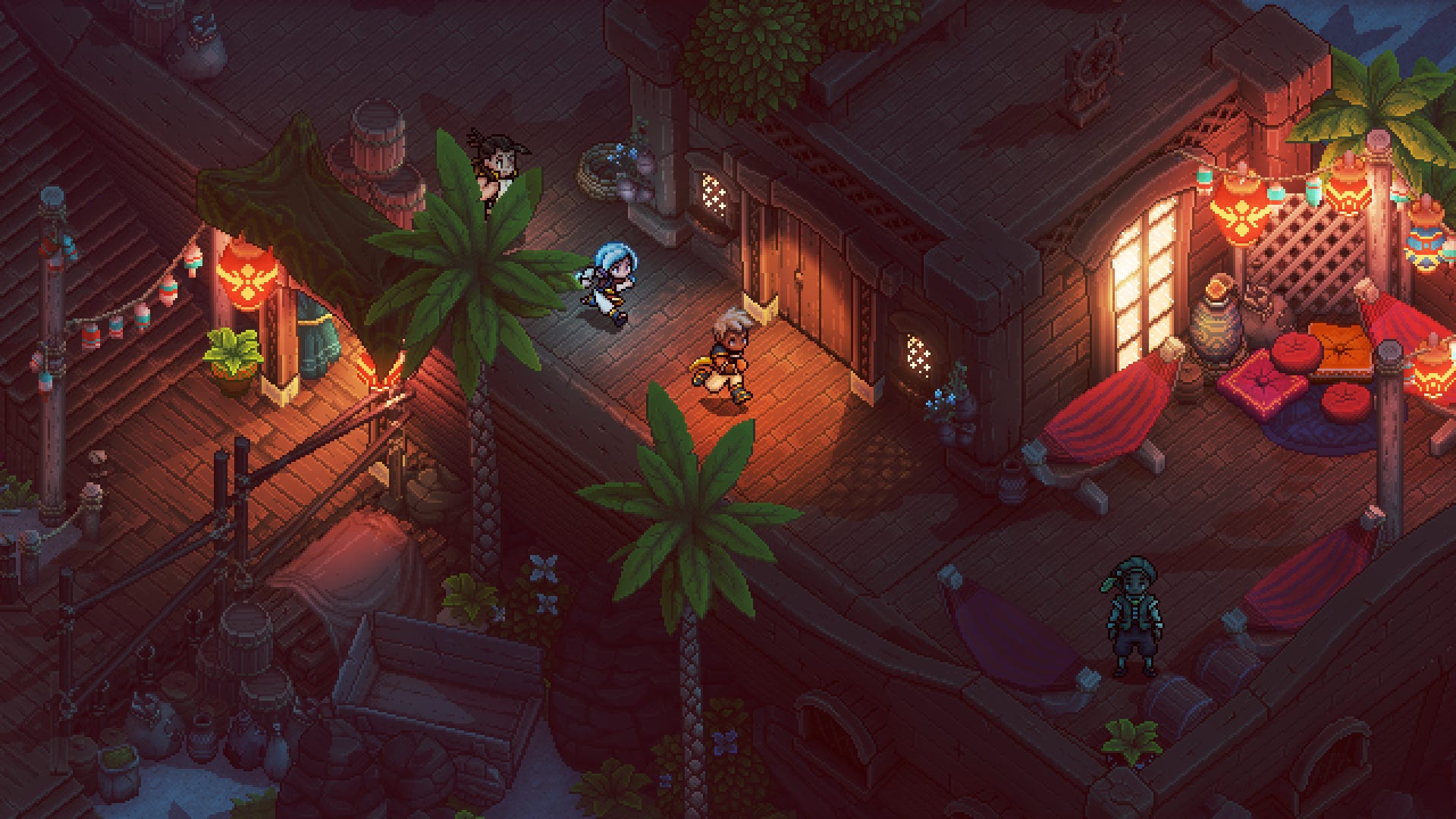
The most obvious nod to Chrono Trigger are the game’s battles, which take place right on the dungeon map and feature dual techs — magic attacks performed by combining the powers of multiple party members. With a heavy emphasis on resource management, players are encouraged to strategically juggle Valere and Zale’s powerful special abilities while watching a limited pool of the MP required to cast the spells. MP is restored via regular physical attacks, turning battles into a dance between building up resources and spending them at the most advantageous time. Outside of battle, the only way to heal is to use a “ration” through the game’s main menu. This calls up a scene of the party camping, a familiar site to console RPG fans, and restores the whole party’s HP and SP. There are no healing items or magic use outside of battles, and rations are a finite resource, only refilled by finding berries or mushrooms tucked out of the way in dungeons, so juggling those resources is part of the game whenever you’re in a dungeon.
In an early interview for Chrono Trigger, Producer Kazuhiko Aoki admitted that the game’s unique overworld battles added a lot of work for his team. “The battle system was another way for us to make Chrono Trigger more exciting and dynamic.” he said. “For us creators who had to make all these scenes though, it was very difficult.”
This style of battle, where players fight enemies directly on the dungeon map, has been carried over to Sea of Stars, and Boulanger confirmed it added a layer of complexity for his team. “It’s a lot of work, for sure,” he said. He described how a traditional “instanced” battle system, like you see in many older console RPGs, where the screen transitions to battles and then returns the player to the dungeon after they’ve won, requires only a single background per dungeon and a static angle for each enemy sprite and animation. “We wanted something more immersive.” Every encounter in the game is a handcrafted experience, requiring Sabotage to think about enemy composition and behaviour, placement, variety, and how it all fits into the overworld. “It’s all handcrafted, and we have integrators working full time adding flavour to every [encounter.]”
One major challenge Boulanger faced was the balance between having an overworld that feels like more than a series of tunnels and combat arenas. “You need to have room for the amount of actors you want to have in battle,” he said. Boulanger and his team want to find the balance between a natural environment — where it feels like the enemies exist in a cohesive way — and one that gives room for the complex battle encounters. As you move through game’s dungeons, you have to navigate many different obstacles, from swift moving currents, to hidden bridges, to, yes, enemy encounters that feel like more than scripted battle arenas.
Aside from satisfying combat, exploration is perhaps the second most important gameplay element an RPG needs to nail to make the player feel compelled to push forward. Dungeons and towns in Sea of Stars are dense and cleverly designed. The player can often see later parts of the dungeon early on, and only through exploration or forward movement do they figure out how to proceed. There’s a labyrinthine quality to them that goes above and beyond the linear dungeons found in games like Chrono Trigger or Final Fantasy VI, without rising quite to the complexity of puzzle-based dungeons like those from Lufia 2: Rise of the Sinistrals or Wild Arms.
Boulanger specifically called out Illusion of Gaia and A Link to the Past while explaining how the team builds the world. There’s a verticality to the level design that didn’t exist in something like Chrono Trigger, and the first time you drop down from a high point while navigating a dungeon, you’ll be reminded of Will plummeting from a rooftop to the cobblestones in South Cape.
Progression through these dungeons — including an early jungle, followed by the dark, fungal innards of Mt. Torment — and towns reveal an art direction that’s broad and diverse, while still staying consistent with itself and its inspirations. The pixel-art environments are lush and full of detail, including many small, subtle animations that breathe life into world, making it feel like you’re exploring a living place, rather than a static, hand-constructed game environment. Sabotage uses brilliant artistic techniques, like transparencies and warping when you step behind a waterfall, or particle-based dynamic lighting, to enhance a graphical style that doesn’t often feature so many different tricks up its sleeve.


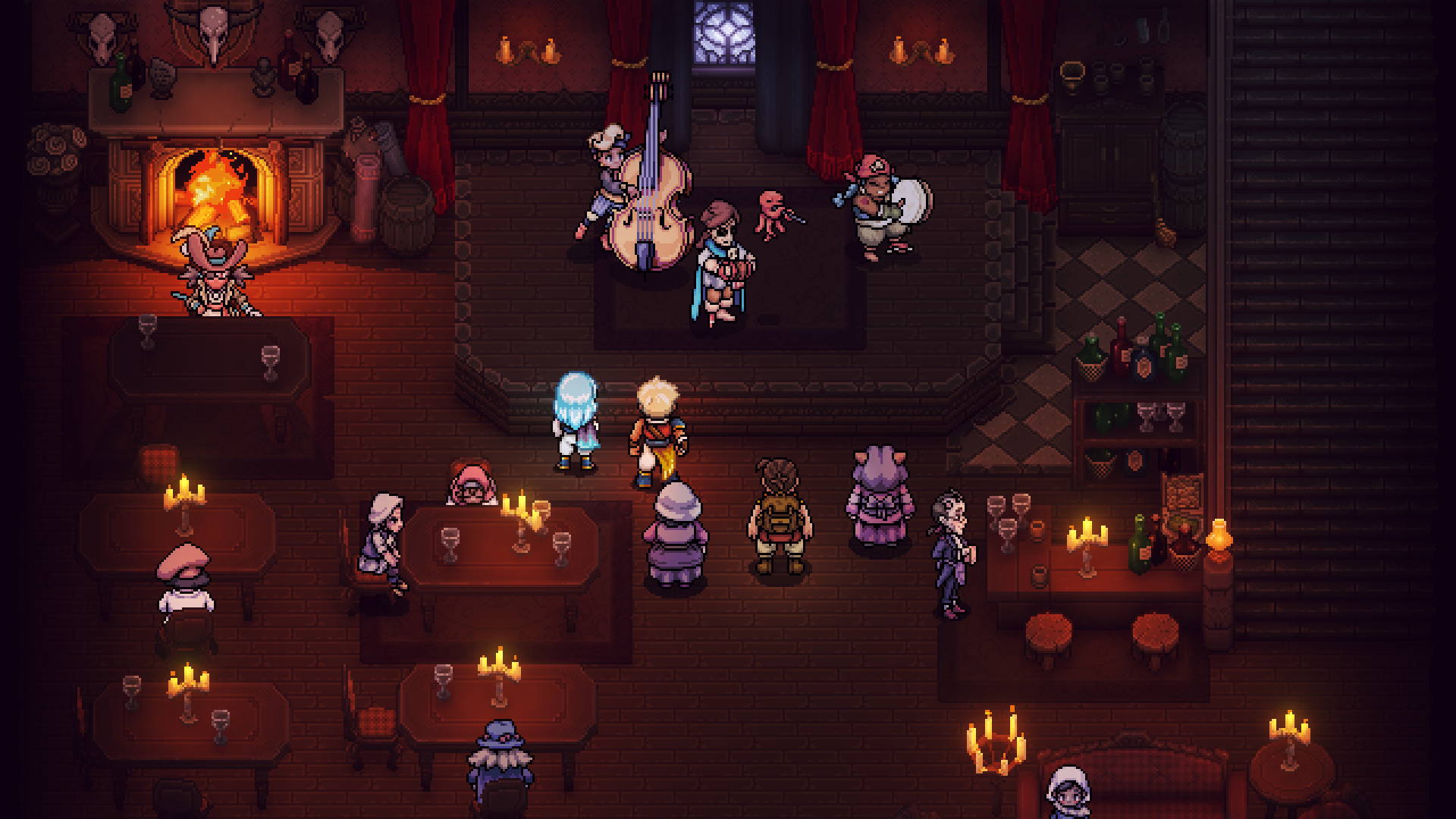
The most impressive of these tricks is the game’s dynamic lighting system. As Solstice Warriors, Valere and Zale have control over the sun and moon, able to switch between day and night (or anywhere in between) with a press of a button. This creates a lot of fun puzzle solving opportunities, as the world changes depending on the time of day, and also presents some truly impressive visuals as the pixel-based world, characters, and landmarks react and change as the lighting moves dynamically from east to west. We’ve seen day-to-night lighting systems in pixel art games for a long time, notably Ogre Battle: The March of the Black Queen, but nothing to this extent. Rather than palette swaps, a technique used in many games to give the illusion of changing light, objects in Sea of Stars create shadows as light moves around them, magic abilities light up the environment around them, and Zale and Valere themselves glow with an ethereal, dynamic light when they’re in dark environments. It has to be seen to be believed.
I’ve been looking forward to Sea of Stars since its original announcement, and eagerly backed the Kickstarter as soon as it launched. Sabotage Studio proved they can execute on ambitious throwback-style games with The Messenger, and as Boulanger told me, this is the game they’ve been wanting to make for years.
And now, it’s time to dive in.
Editor’s Note: This piece was originally published in a slightly different form on Insert Cartridge.
Support
There are lots of ways to support Astrolabe and my other work. Check ‘em out!
Keep In Touch
Enjoy Astrolabe? Want more SFF and retro gaming goodies? You can find me on Twitter and my website.
Credits
Astrolabe banner photo by Shot by Cerqueira on Unsplash

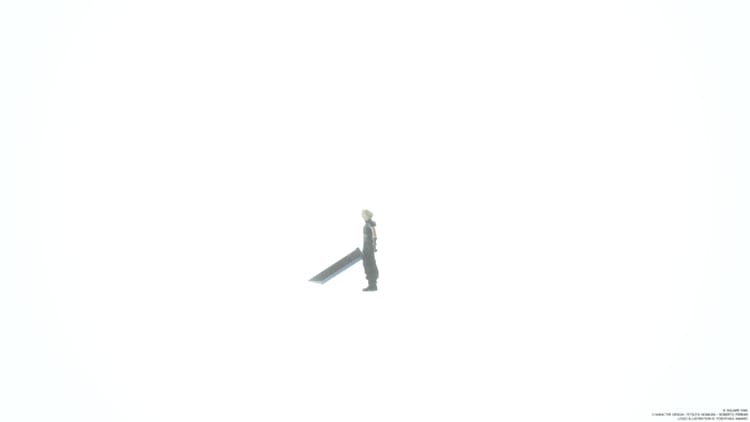


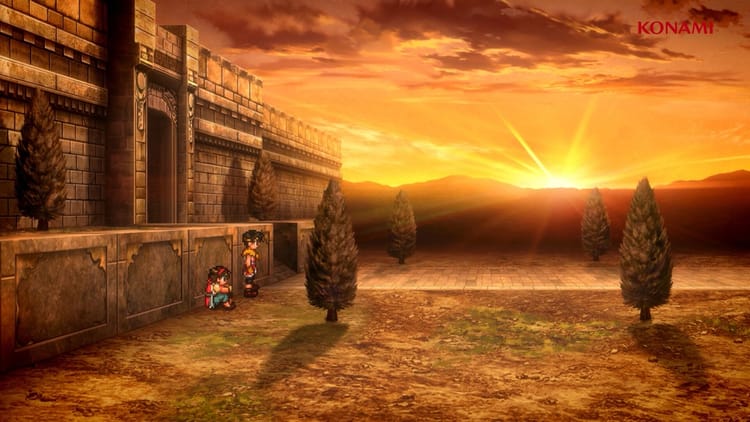
Member discussion